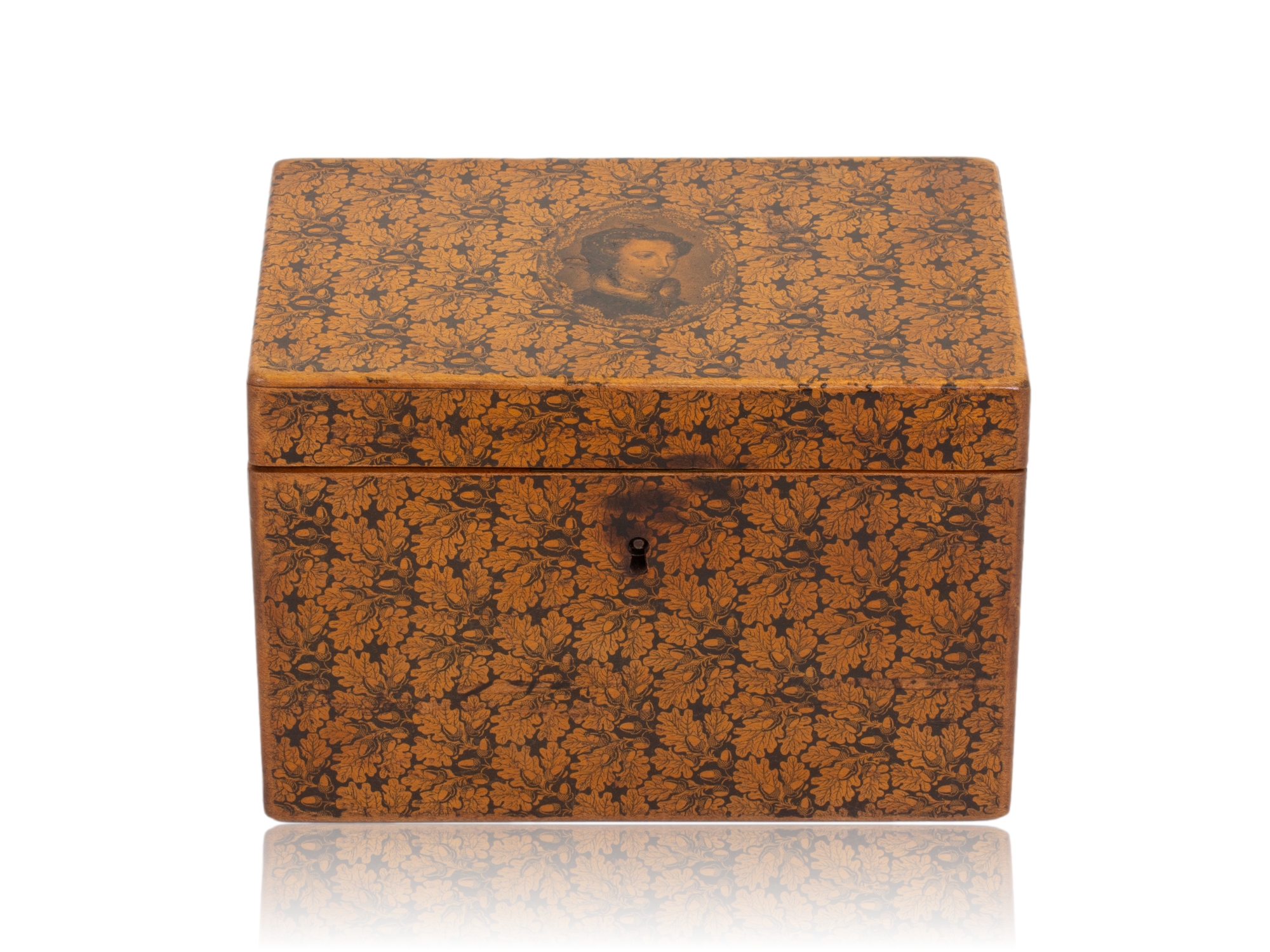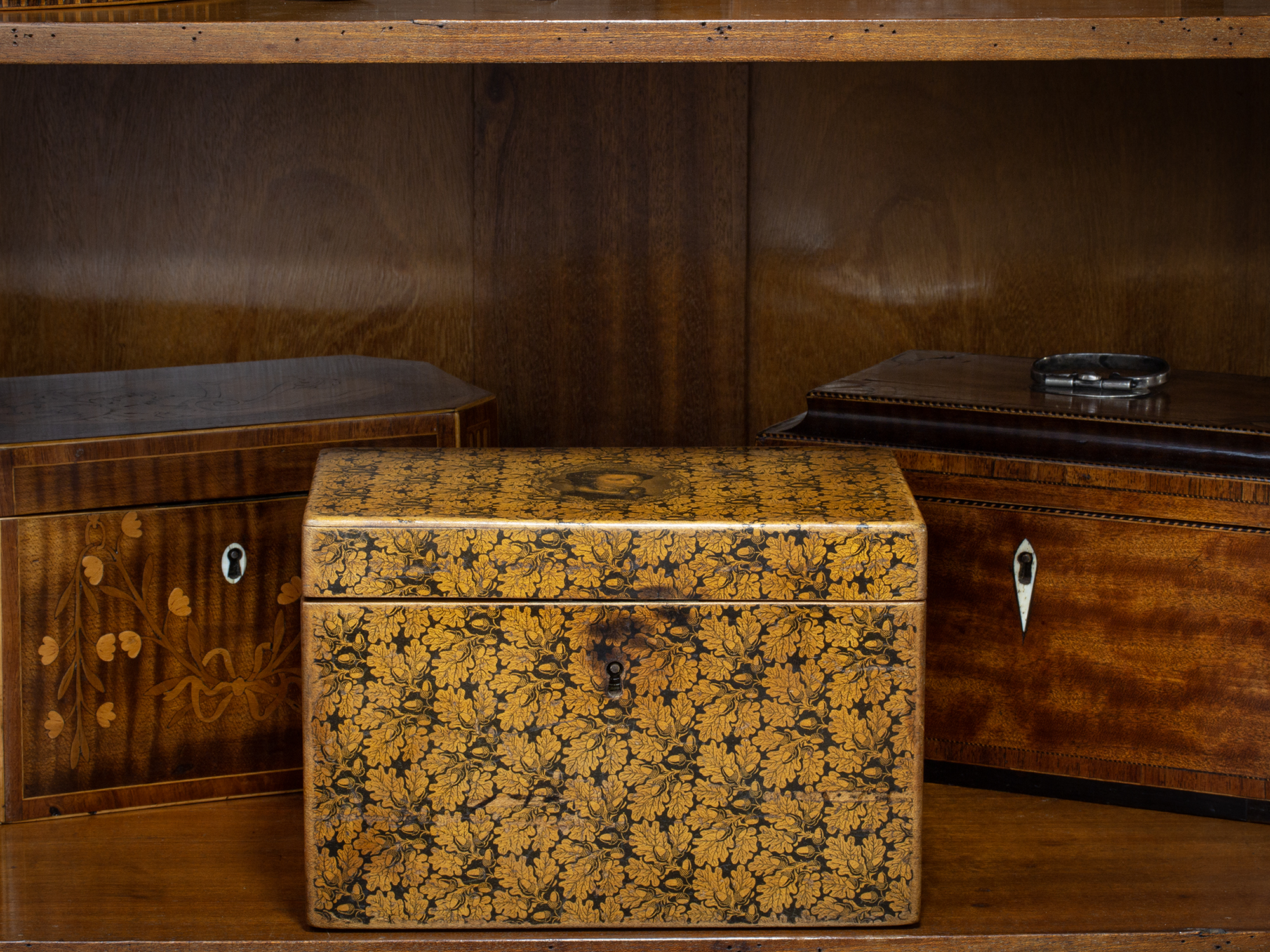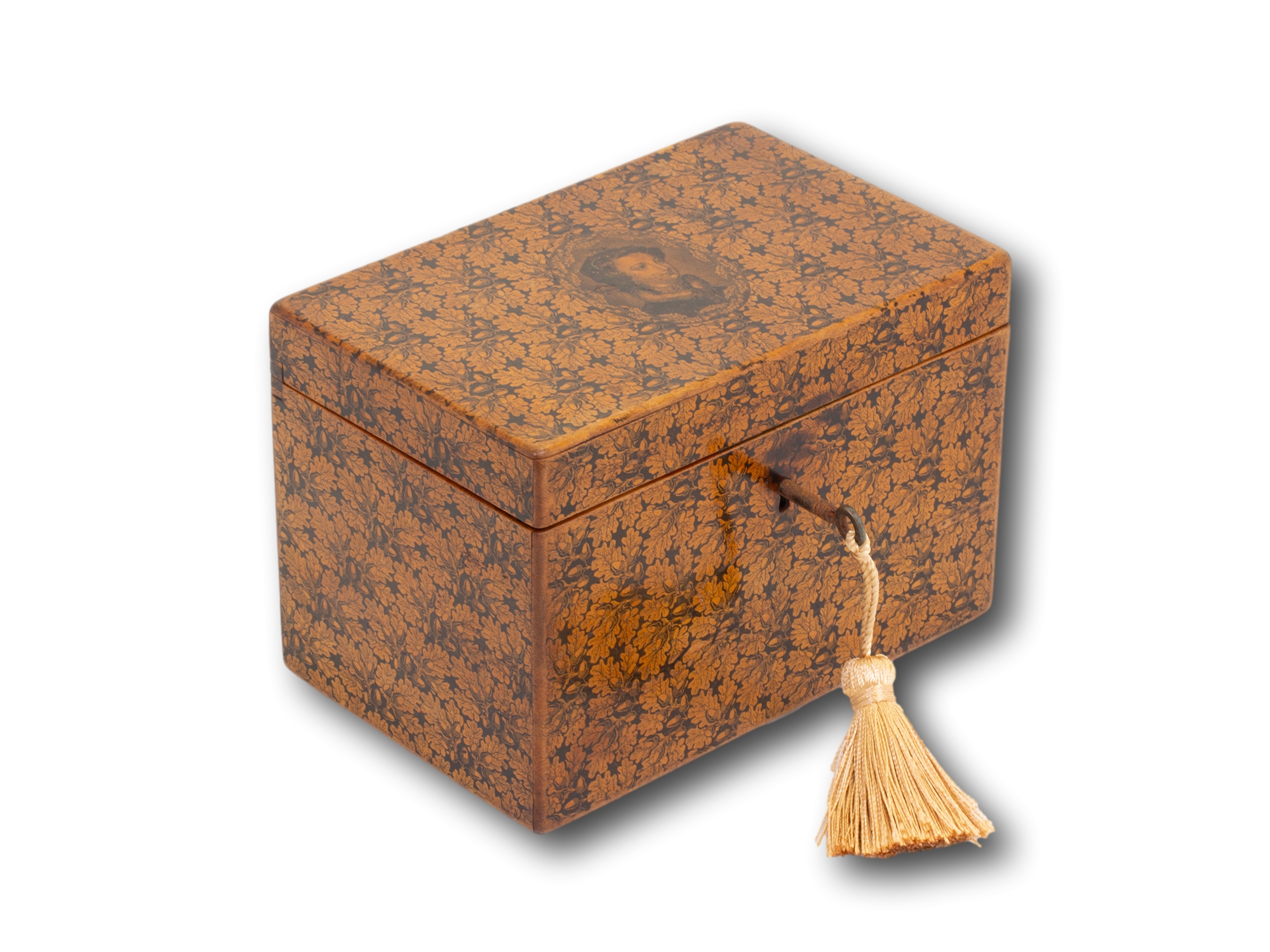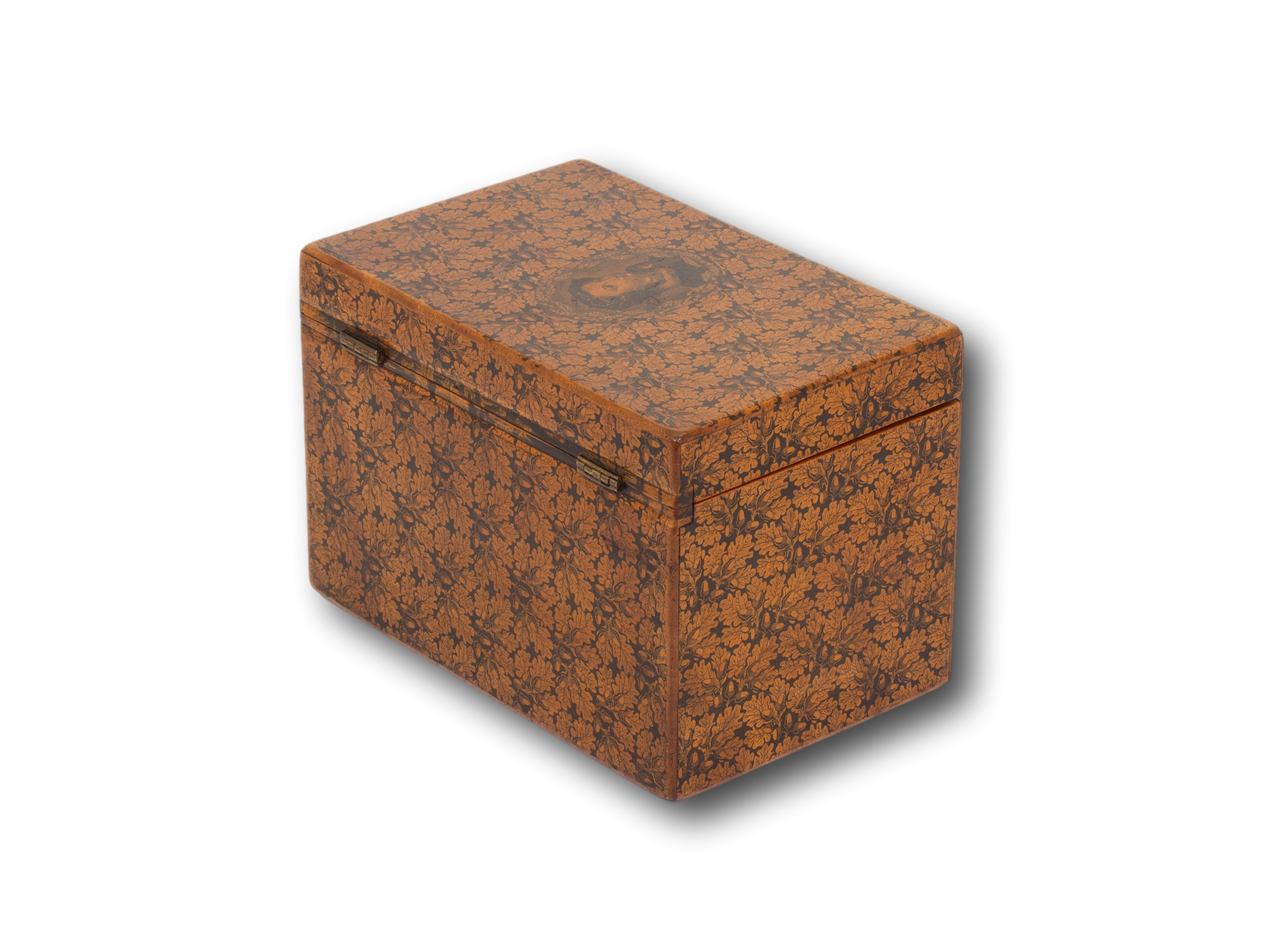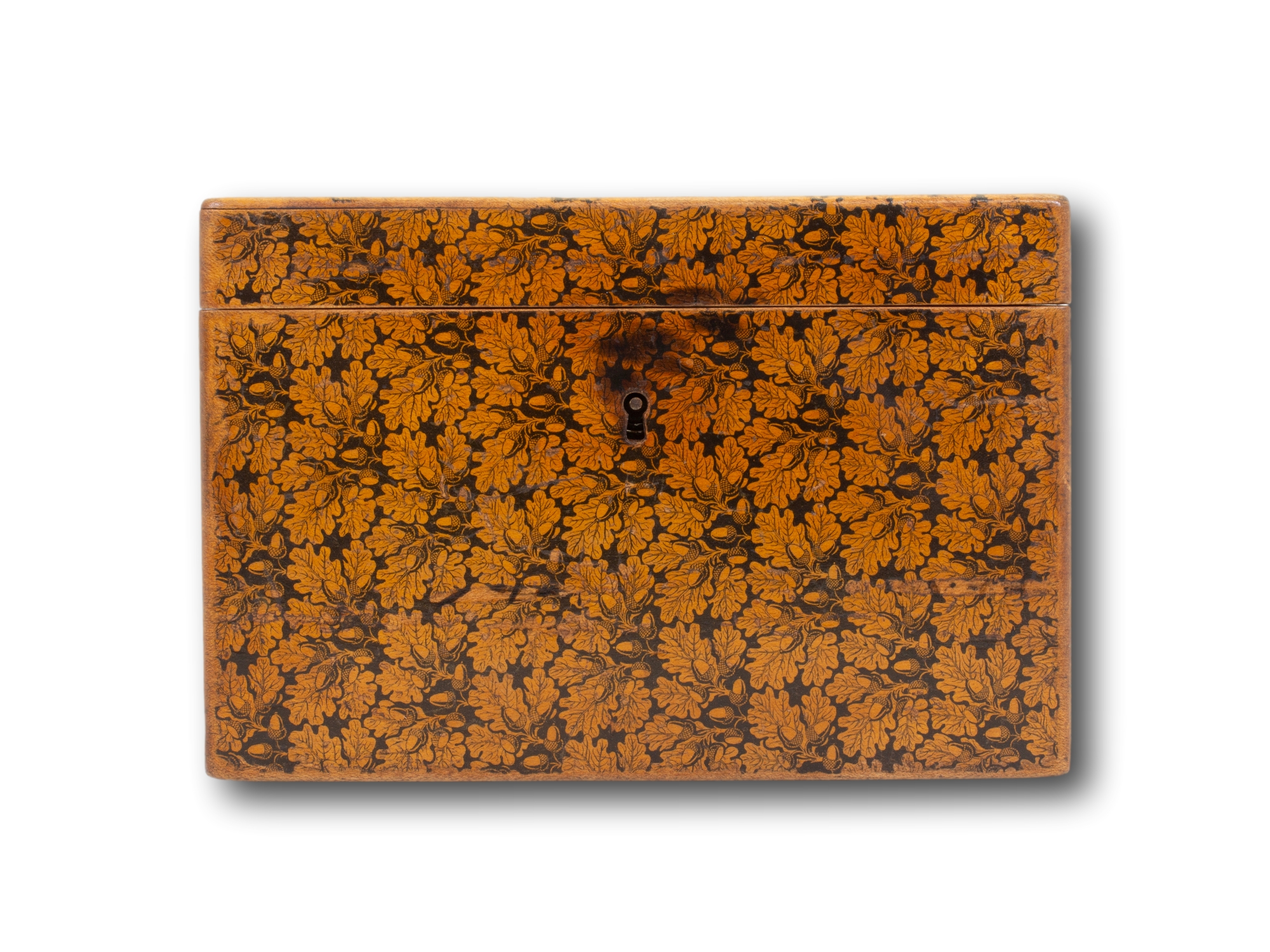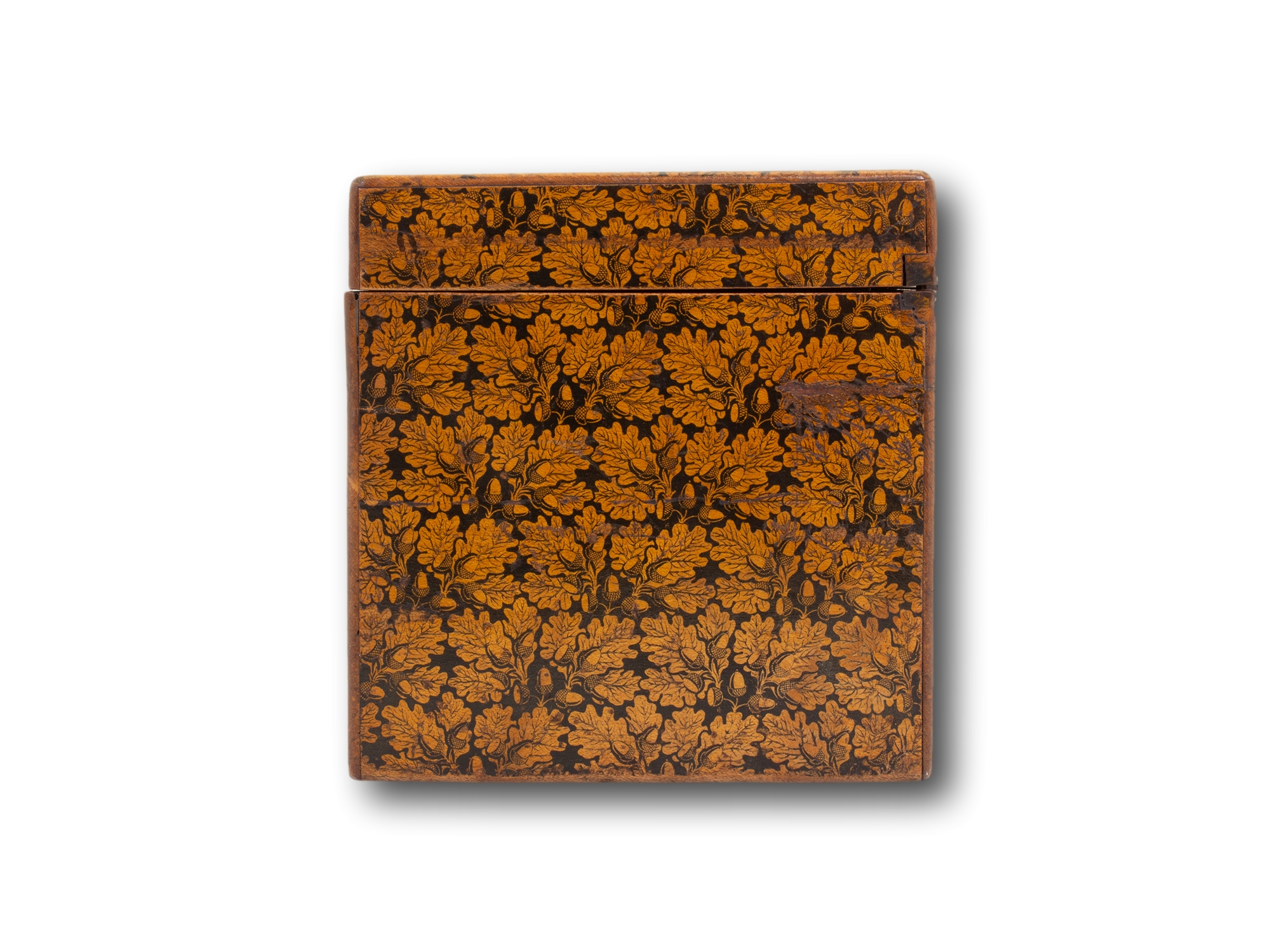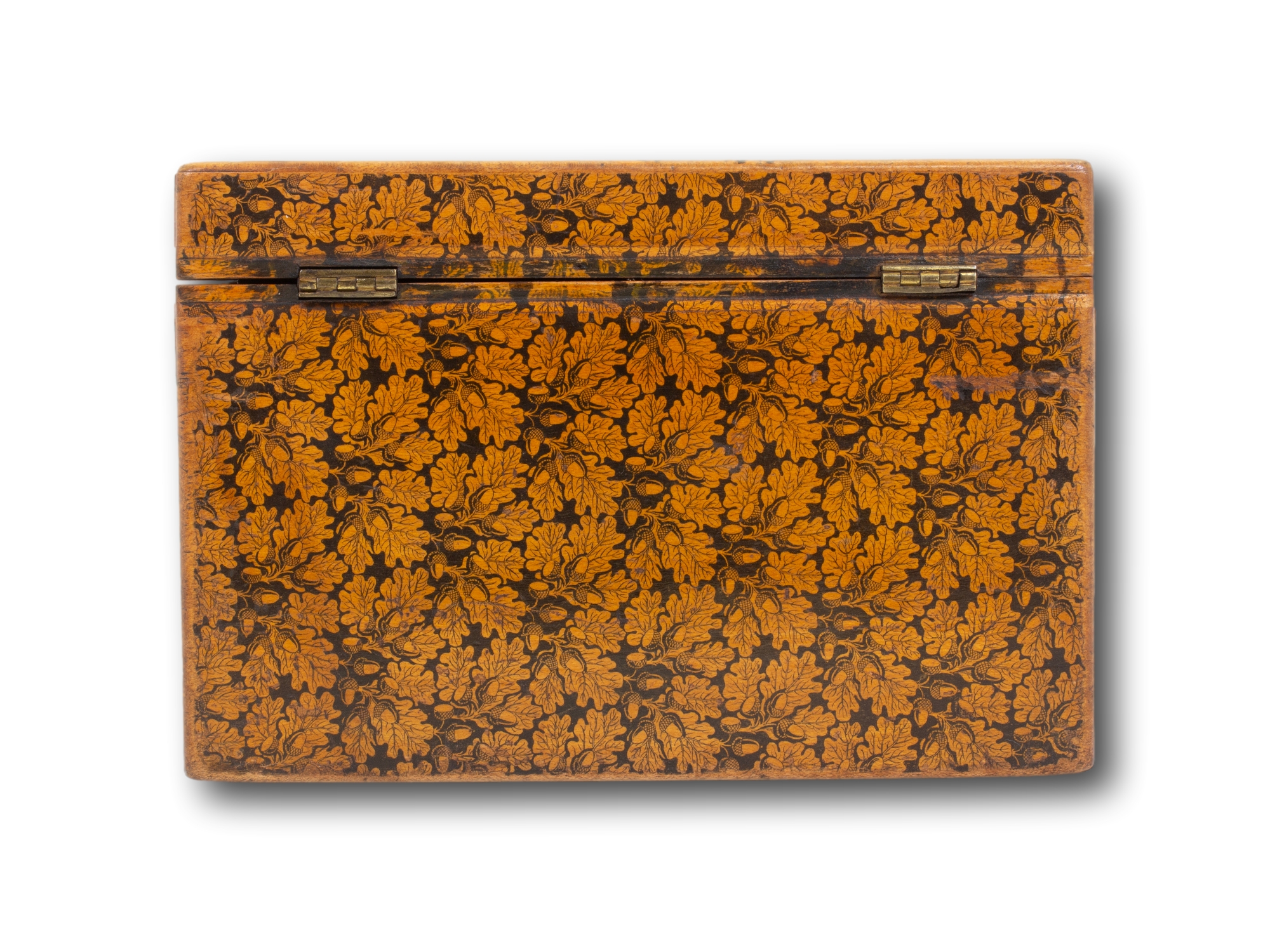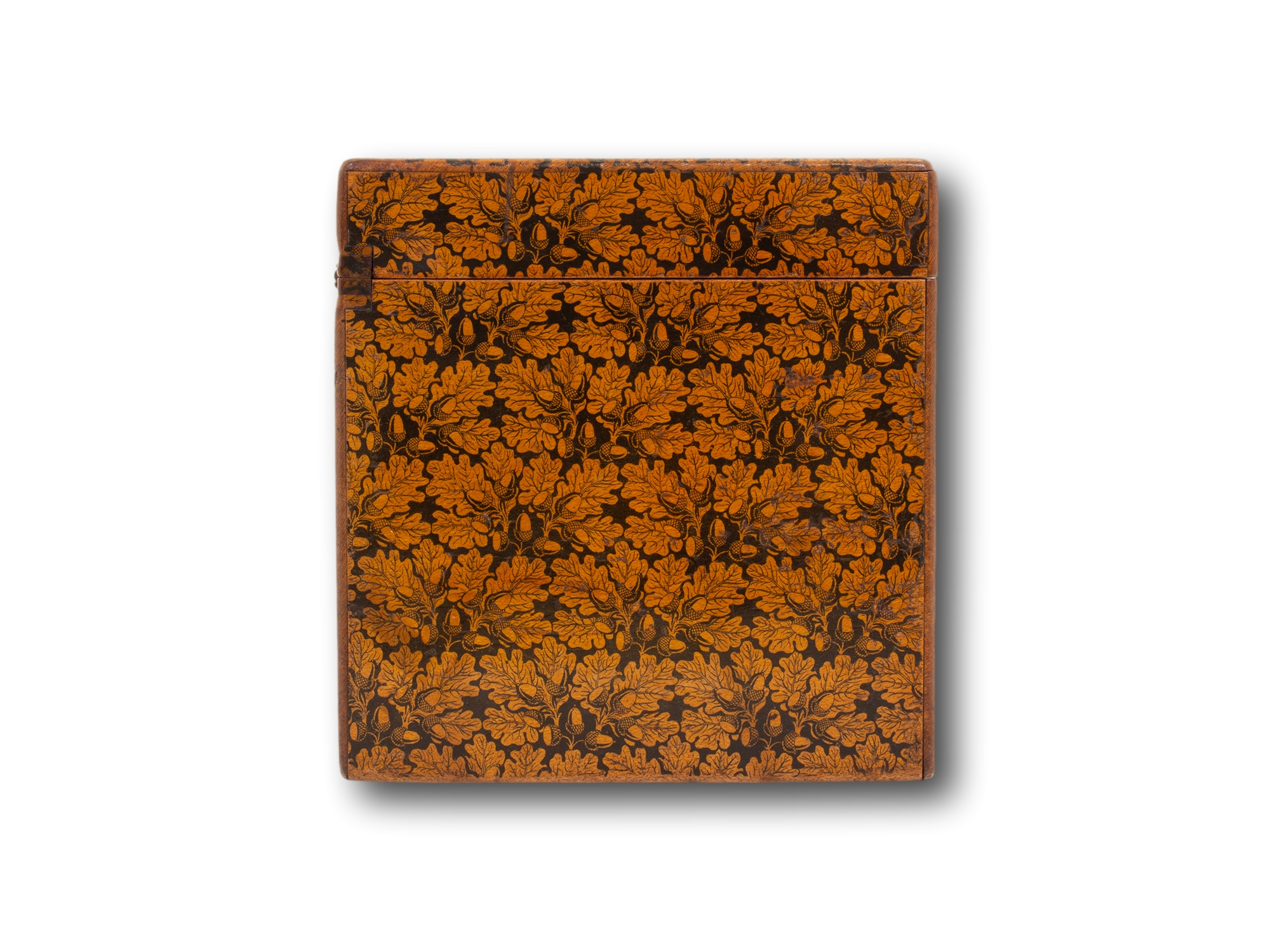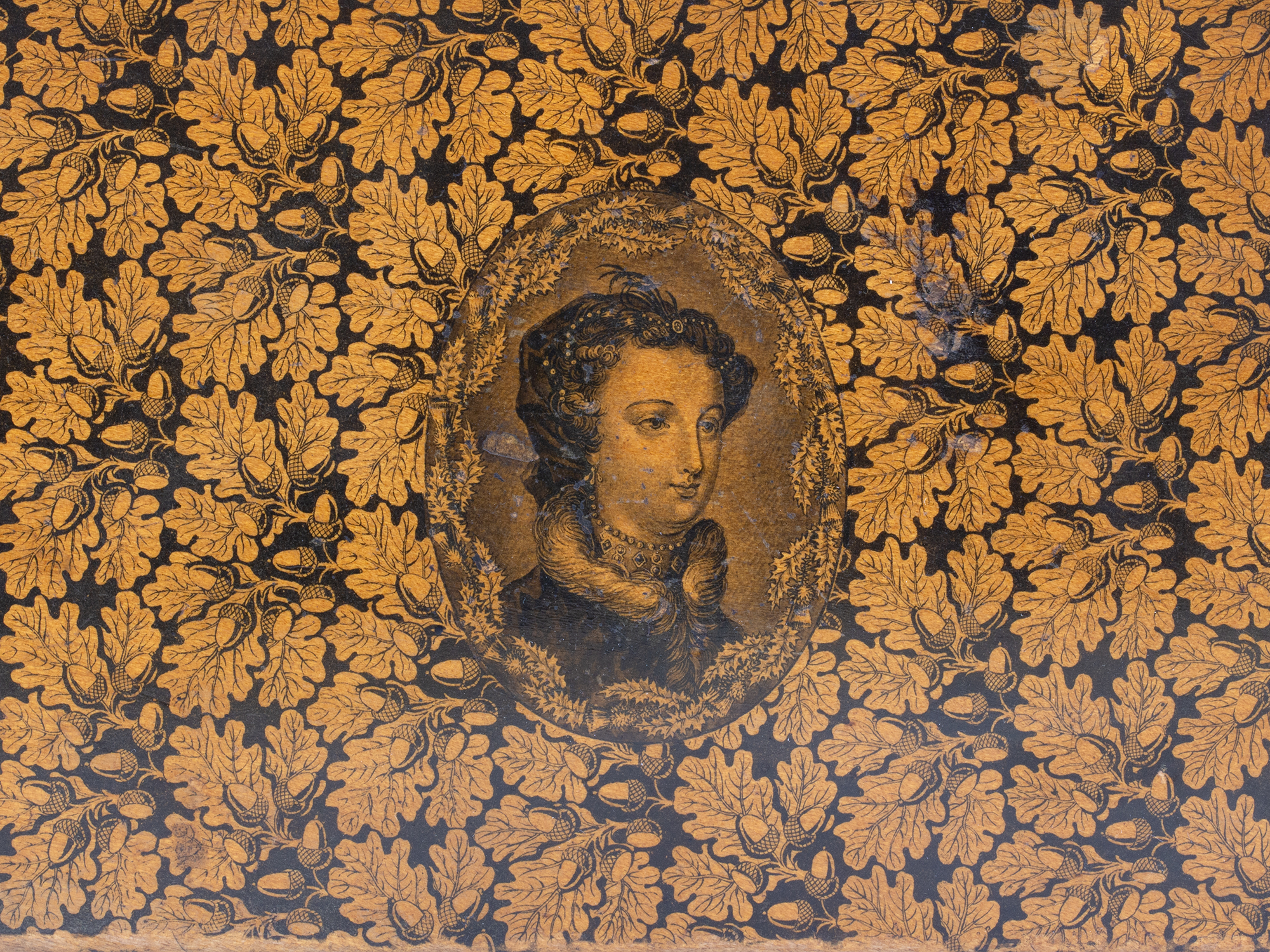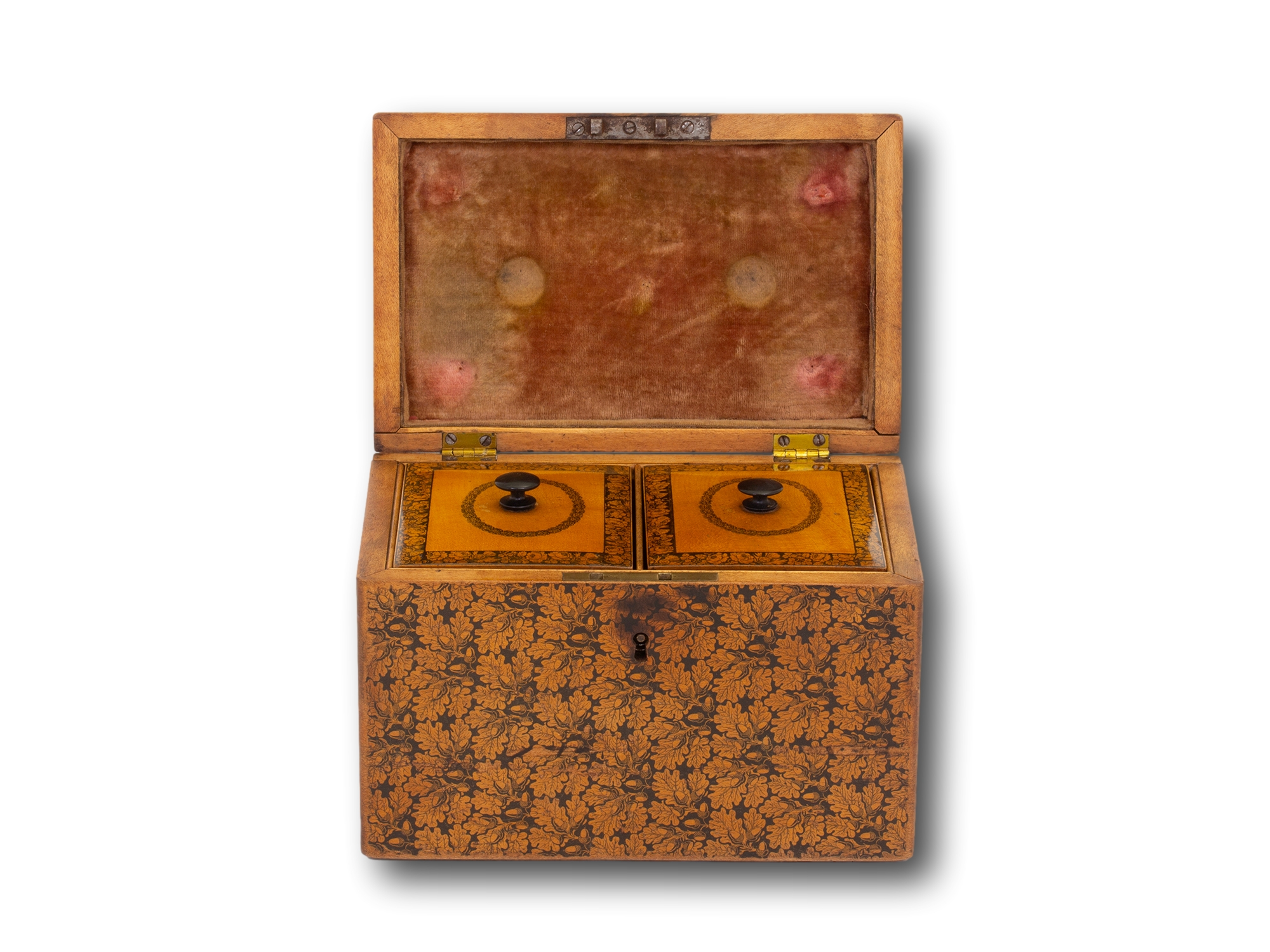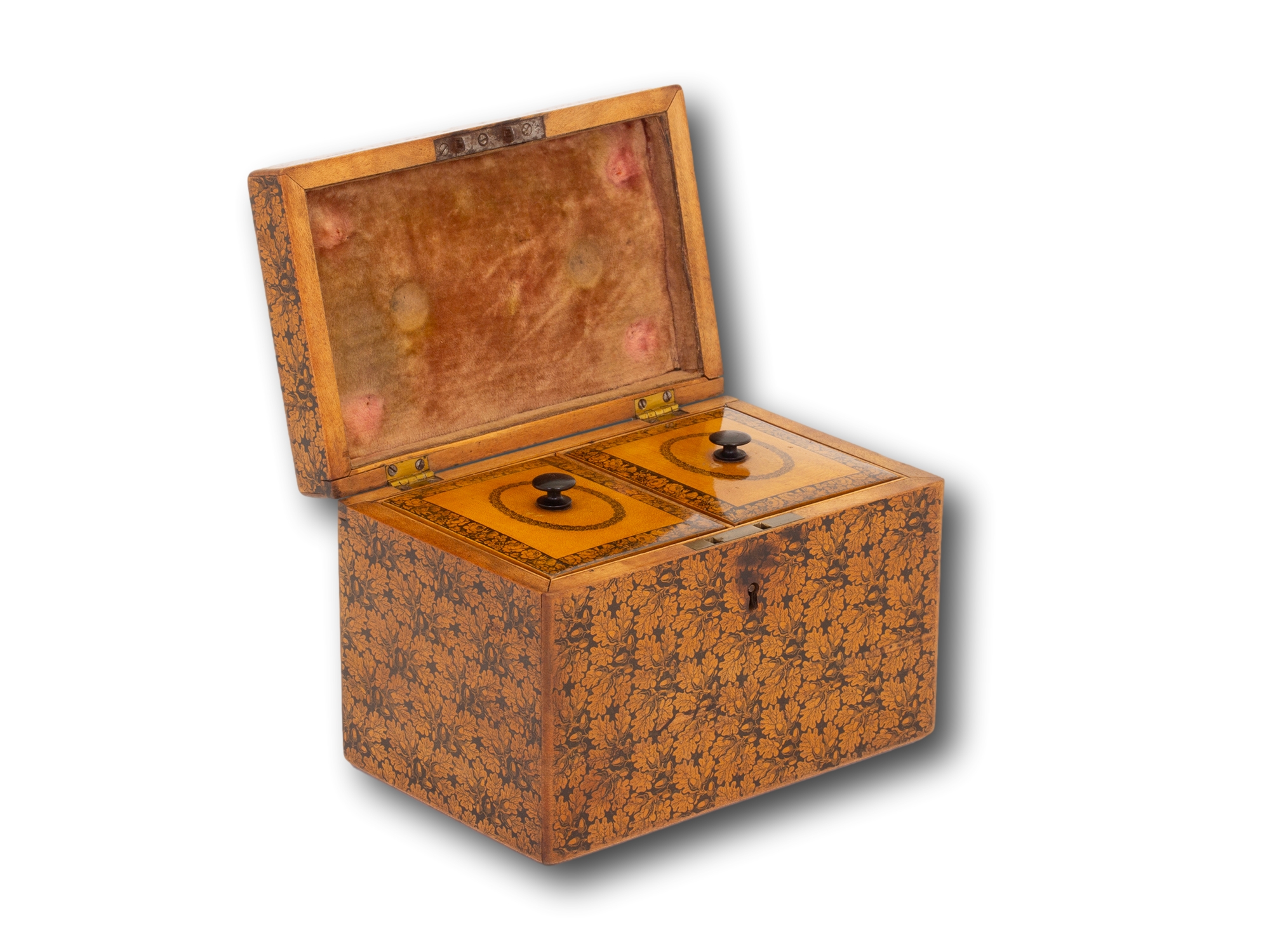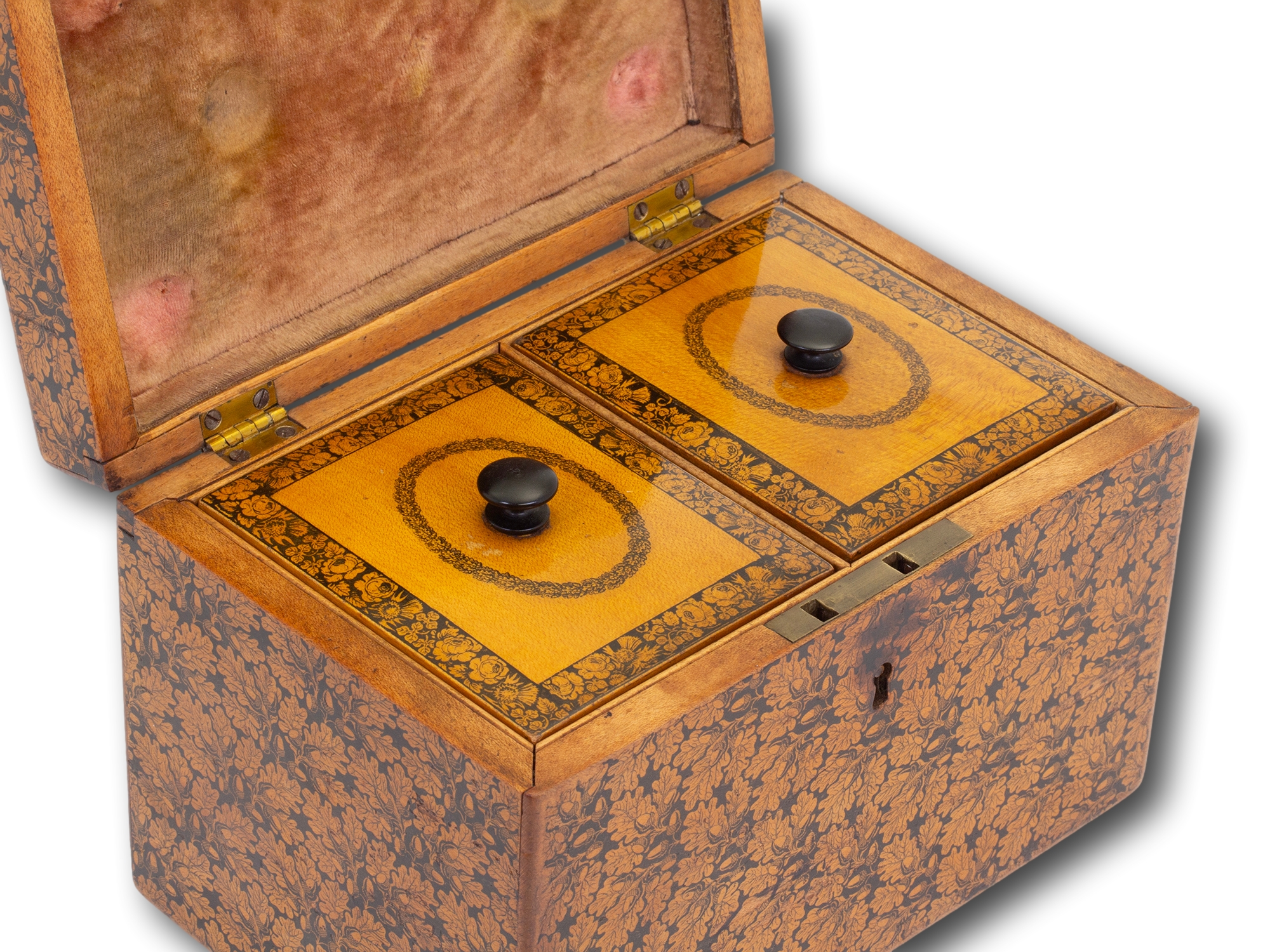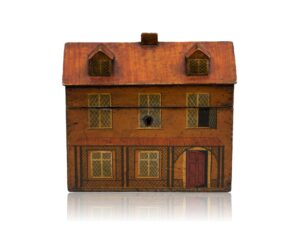Scottish Mauchline Ware Tea Caddy Smiths (att.)
£1,850.00
Acorn Design From our Tea Caddy collection, we are pleased to offer this Scottish Mauchline Ware Tea Caddy attributed to Smiths. The Mauchline Ware Tea Caddy of rectangular form made from Sycamore is extensively decorated to the exterior with an... Read More
Mary, Queen of Scots Portrait

| Dimensions | 18.5 × 12 × 12.5 cm |
|---|---|
| Country | |
| Medium | |
| Period | |
| Year | |
| SKU | 501422-TPCE |
Description
Description
Acorn Design
From our Tea Caddy collection, we are pleased to offer this Scottish Mauchline Ware Tea Caddy attributed to Smiths. The Mauchline Ware Tea Caddy of rectangular form made from Sycamore is extensively decorated to the exterior with an acorn transfer featuring an oval cartouche to the lid with a portrait of Mary, the Queen of Scots. To the inside the Mauchline Tea Caddy contains two partitioned compartments with floral decorated lids surmounted by turned handles and a velvet lined inner lid. The Tea Caddy unusually features original brass hinges and a templated hinge which was never carried out to the rear. Typical Mauchline Ware hinges are integrated into the design of the box. See our other Mauchline Ware Tea Caddies here. The Tea Caddy dates to the first half of the 19th century during the reign of William IV circa 1830.
The Mauchline Ware Tea Caddy comes complete with a working lock and key.
Measurements (inches) 4.9 High x 7.3 Wide x 4.7 Deep
Mary, the Queen of Scots Mary (1542-1587) known as Mary Stuart or Mary I of Scotland, was the only surviving legitimate child of James V of Scotland and Queen of Scotland from 14 December 1542 at 6 days old when here died until her forced abdication in 1567.
Mauchline Ware was the production of Scottish white-wood products, it was mainly manufactured from the 1820s until 1939. The production of souvenir woodware for the tourist market began in the 1790s with the snuff box industry in Ayrshire. By 1820, Mauchline ware was well established, supplying souvenirs from wood grown ‘on the Field of Bannockburn’, ‘on the Abbey Craig’, ‘on the slopes of Stirling Castle’ and made into sewing requisites, egg cups, trinket boxes and many other kinds of souvenirs, transfer printed with a line drawing of the place. The firm Smith’s who regarded as the the leading and most renowned manufacturer of Mauchline War among a few lesser known and shorter lived companies. They ranged from the basic transfer as on small vases to boxes and smaller household accessories / useable objects each piece having the view of the place of purchase. The transfer subjects ranged across Scotland and more of the British Isles to the rest of the world. As a result of the early Mauchline Ware, Tartan ware became extremely popular after W & A Smiths invented a machine for “weaving” tartan designs on paper. Fernware was then introduced in the 1870s which involved applying actual ferns to the wood which was then stippled in dark brown. The ferns were then removed and the wood varnished. Sycamore was mainly the wood of choice across the whole product range. These products were sent all over the world and today there is a fierce collectors market, especially for the rarer pieces. Sadly a fire in 1933 stopped the entire production which was never restarted and Smith’s finally closed down in 1939. Smiths held a Royal Warrant and were makers to his majesty during the 19th century.
Smiths (later W & A Smiths) were the leading manufacturer of Mauchline Ware. Their Boxware Factory was located in Mauchline Ayrshire, West Scotland. Founded by Andrew Smith circa on 1831 who began by making snuff boxes. These boxes had a secret hinge called ‘The Cumnock Hinge’, and this type of box work had ‘Migrated’ to Mauchline from Cumnock where over one hundred and ten men and women were employed. The company suffered from two internal fires one in 1869 and a second in the late 1880s both times the firm rebuilt and introduced new machinery. This type of factory was prone to fires due to the inflammable nature of materials and the constant heat in the drying sections of the factory.
Sycamore also known as Harewood is a member of the Maple family, found in Europe. It is light yellow in colour and is often a very clean wood, with a straight, fine grain. The wood is often pippy. However, these pips are usually a very similar colour to the rest of the wood making them hardly visible.
With every purchase from Mark Goodger Antiques, you will receive our latest catalogue, a Certificate of Authenticity, detailed care instructions for your chosen piece and an independent invoice (for insurance purposes) will be enclosed. As well as being protected by a no-hassle, money-back policy, your piece will be entirely insured during the shipping process to ensure the safety of your item.
Additional information
Additional information
| Dimensions | 18.5 × 12 × 12.5 cm |
|---|---|
| Country | |
| Medium | |
| Period | |
| Year | |
| SKU | 501422-TPCE |
